.png)



User Research, Prototyping, Motion Design
Lorem ipsum dolor sit amet, consectetur adipiscing elit, sed do eiusmod tempor incididunt ut labore et dolore magna aliqua. Ut enim ad minim veniam, quis nostrud exercitation ullamco laboris nisi ut aliquip ex ea commodo consequat. Duis aute irure dolor in reprehenderit in voluptate velit esse cillum dolore eu fugiat nulla pariatur.
Block quote
Ordered list
Unordered list
Bold text
Emphasis
Superscript
Subscript
MyWorker.AI is an AI sales platform that automates lead generation and management for small teams.
AI automation acts like a barrier, not a bridge. Non-engagaing/complex sales tools and AI skepticism prevent trust and user conversion.
We conducted founder interviews, competitor analysis, and user flow mapping. This uncovered user pain points around transparency, control, and cognitive overload in existing sales automation tools.



Users drop off during setup due to friction, lack of guidance, and skepticism about AI. Adoption requires trust and personalization before they feel comfortable relying on automation.
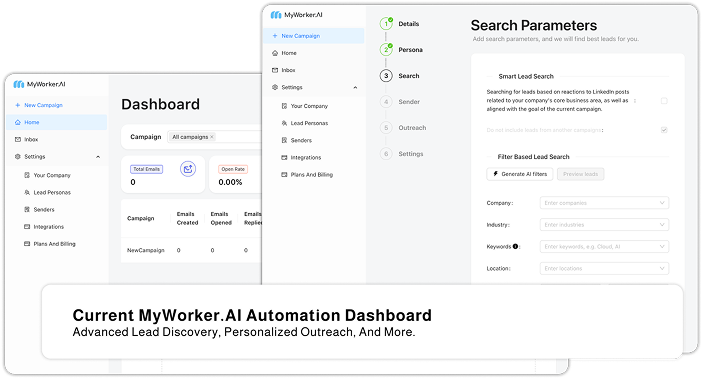
MyWorker.AI’s excitement fades because a dashboard alone creates no emotional connection.
Could an AI sales avatar simulate weak ties to create a sense of connection that resonates with users?
Through white paper research on topics such as building trust in AI systems and psychological & ethical implications of human-like AI we found that video agents can:
How might we design and deploy an AI video sales agent that builds trust, enhances engagement, and feels contextually appropriate across MyWorker.AI’s platforms?

Overall, our research highlighted a clear opportunity: design a system that feels human-aware, transparent, and aligned with founders’ values, bridging the gap between cutting-edge technology and the emotional needs of users. This informed our design principles below.
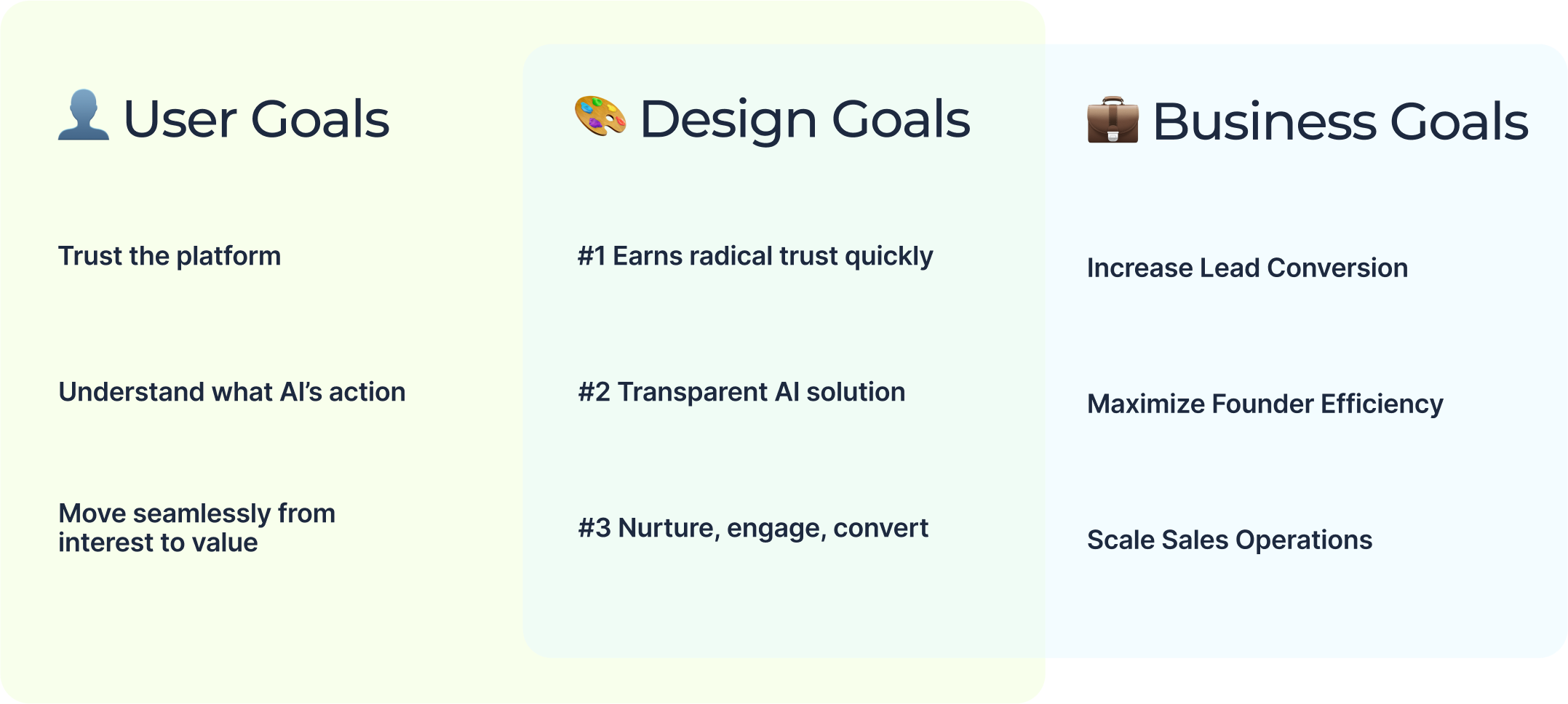
After setting design goals, we mapped user flows, defined features, and brainstormed concepts.
We ultimately focusing on a digital concierge to demo products, book founder calls, and guide users through the startup’s services.
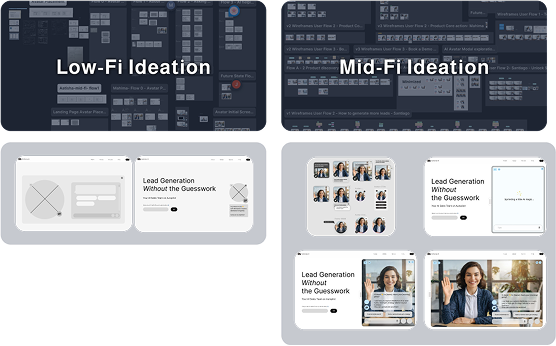
Low-Fi take-aways:
Mid-Fi take-aways:

After conducting user testing, we optimized the interface by improving placement and sizing of multiple features and adjusting user flows for providing fast value.
Two of these changes in design include:
.png)
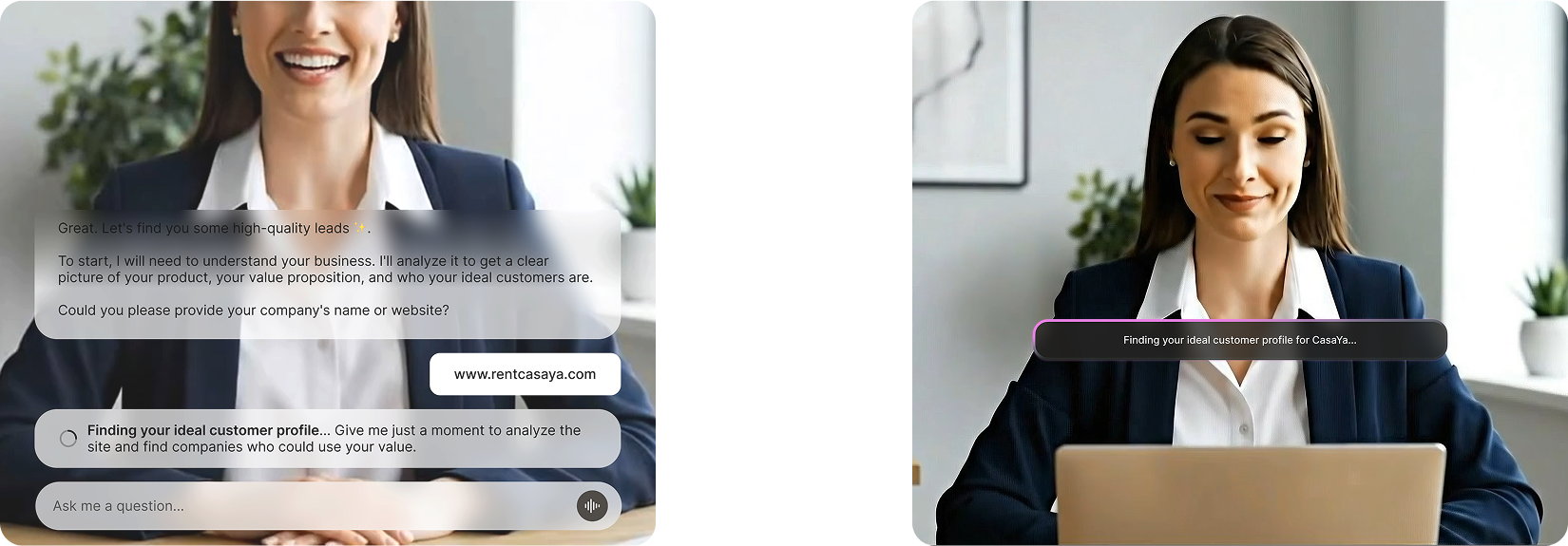
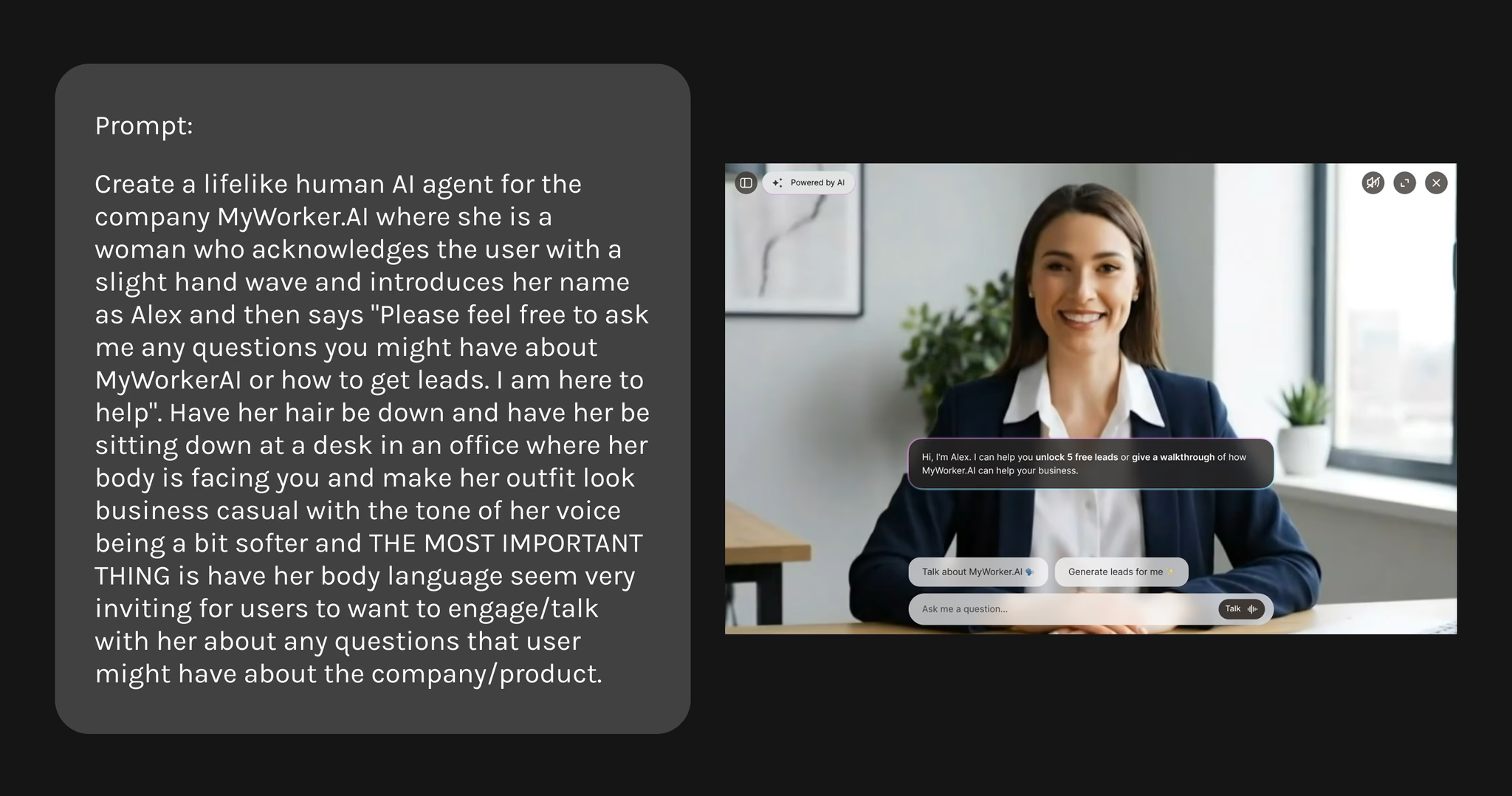


We designed for North Star Vision. Technology is not there yet in terms of time and cost-effectiveness. Temporary pivot to a text-based AI experience.